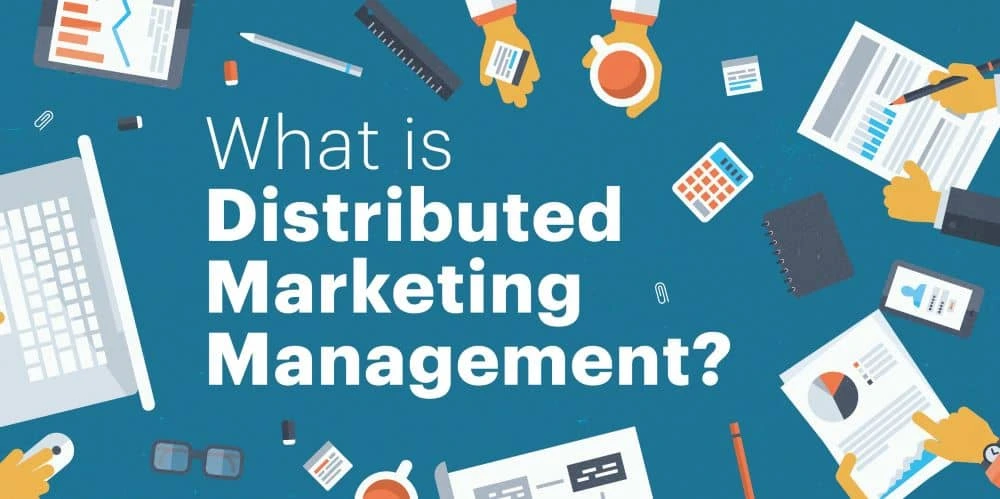Here’s a startling fact for you: marketing has changed.
(Gasp!) I know. It’s a frightfully unsurprising tidbit of information. But here’s the deal—it’s not only marketing that’s changed, it’s who’s doing the marketing.
Gone are the days where marketing meant a highly-trained marketer doing mass marketing to a mass audience while everyone else focused on running a company worth marketing for.
Related: How to survive the democratization of content creation in 2018 and beyond
These days, “everyone else” is significantly more involved. Employees, partners, vendors (the list goes on) are often involved in creating content that represents your brand. And since marketing, when it comes down to it, is any touchpoint your brand has with its consumers, this sort of involvement can be frightening to brand managers.
From email onboarding to Yelp reviews to customer support, marketing has slowly crept up on every department and every employee to hold each and every one of them responsible for properly representing the brand.
The problem? Not everyone knows how to properly represent the brand.
As businesses expand across locations, consistent marketing becomes a major issue. Old logos are used, images are stretched, colors are off-hue, and horrific clip art is inserted into marketing collateral. It’s a brand manager’s nightmare. So how do we fix it?
Enter distributed marketing management.
Definition time!
Distributed marketing management is the process of creating, managing, and delivering marketing content across a wide range of channels and locations—all while staying consistent along the way. It’s the 21st-century marketers’ solution to allowing brands to easily expand without disrupting their messaging or their time.
Distributed marketing, whether you’ve heard of it or not, has become a common strategy among organizations for tackling their larger-than-life and never-ending list of marketing tasks. Up until the last decade, businesses lacked a way to centralize their ever-expanding marketing needs and get their brand out efficiently without disrupting it.
Plus, with a growing number of potential channels, audiences, partners, distribution methods (should I go on?), any normal organization quivers at the thought of dealing with all the moving parts on their own. They need something that helps them centralize, customize and manage everything without wasting time and without stepping on toes.
The benefits. Oh, the benefits.
This distributed marketing management stuff (try saying that five times fast) makes life a whole lot easier for marketers. A few reasons why:
- Cloud-based, lockable templates. Brand compliance is no longer optional (hallelujah). Brand managers can lock down fonts, colors, and images in their custom templates before employees edit them.
- Permission management. The balance between corporate control and local autonomy is secured by defining which employees can edit, comment, or simply view marketing content.
- Marketing asset management. Marketing assets are centralized, improving the efficiency of teams, ease-of-access to branded files, and overall brand compliance.
- Multi-channel distribution. The distribution of marketing materials, whether print or digital, across a variety of channels is extremely simplified.
- Streamlined workflow. The back and forth between corporate and local employees gets rather old. Distributed marketing software allows for real-time collaboration and gives local employees the ability to make changes without waiting for the help of a corporate designer.
- Saved time. By allowing employees to create and execute multi-channel marketing campaigns on their own, corporate marketers can use their time for the bigger projects and problems they were hired to tackle.
- Consistent branding. This one’s no secret, and (I think) has been sufficiently covered in this post. But, if it helps, consistent brands enjoy 3-4x more visibility than inconsistent ones. Yet another reason to make brand consistency a major priority in marketing strategy.
Distributed marketing in the real world
Heard of MHA? Most likely not. But there are thousands of elderly in Europe who have, thanks in part to distributed marketing.
MHA, the Methodist Housing Association, was founded during World War II with the goal of providing shelter and resources for the elderly. Now managing over 90 care homes and housing over 5,000 elderly, the association has spread across England, Wales, and Scotland.
The problem MHA faced was a problem common amongst such organizations. The various homes and communities operated mostly autonomously until very recently when the organization decided to attempt unifying the groups into a single entity. Up until this point, the communities had been self-run, using their own messaging, mediums, and marketing tactics for almost 70 years. MHA marketing knew they had to find something that was cloud-based and easily managed.
With just a little bit of research, Kwan Cheung, MHA’s Community Marketing Specialist, discovered that template-based marketing with Lucidpress would solve his inconsistency issues almost entirely. He updated MHA’s brand guidelines, applied them to some custom templates, locked down the branded elements, and distributed the templates to MHA’s various communities for them to localize without disrupting the essence of MHA’s branded style.
From branded posters and flyers, to Facebook ads and digital newsletters—MHA finally discovered a way to keep their brand consistent without slowing it down. Thanks, distributed marketing! (Read the full case study here.)
At the end of the day, marketing will always be hard. Once you get the messaging down, it’s hard to distribute it properly and quickly. That’s why implementing a system that helps you easily customize and distribute materials, no matter how big your business grows, is honestly worth every penny.
Convinced your organization could use the help of distributed marketing? Lucidpress includes all the above-mentioned features and more to help you centralize and manage your marketing campaigns. Give it a try and start working some marketing magic today.



